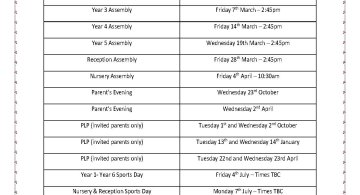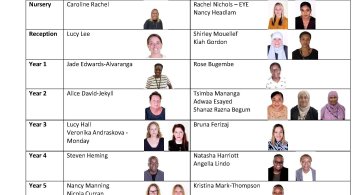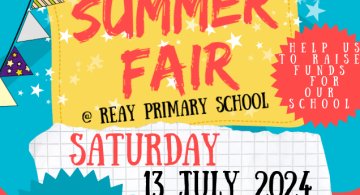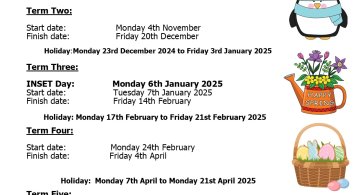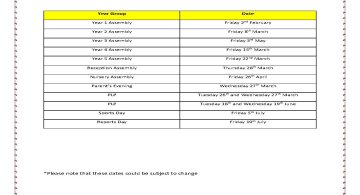- An integrated, contextualised approach
-
An integrated, contextualised approach
‘In an English-speaking country a wide and exciting curriculum must have English at its heart – whatever the subject matter, children must listen to learn; must speak to articulate their understanding; must read to find out more; must write to consolidate what they’ve learned and thoughtfully consider the best ways of expressing it.’
English Association quoted in Cambridge Primary Review.‘A blank piece of paper is God’s way of telling us how hard it to be God.’
Sidney SheldonAt Reay, we believe that a holistic approach encourages children to make links between the various aspects of literacy and gain the confidence to apply them as a result of this deeper understanding. We have built up a fantastic tradition of topics based around high-quality texts chosen to interest our specific children as well as target their individual needs. These are then used to explore the topic through using a child-initiated approach as well as ideas/planning from class teacher’s own experiences through the Mantle of the Expert sessions. One of these topics would tend to look like a typical Talk for Writing (Pie Corbett)/Visual Literacy planning sequence:
- Immersion
- they are involved in learning (bits of) it by heart,
- looking at and discussing pictures,
- performing parts,
- talking about it, (book talk)
- predicting what will happen next,
- role play – dressing up as characters
- drama – hot-seating, decision alleys etc.
- SPHAG – looking at key aspects of spelling, punctuation and grammar in the chosen text – what has the author used?
- Imitation
- Creating feelings graphs
- Babble gabble/tennis retell
- Freeze frame the story – order your fellow pupils or photos of them
- Storyboard/map/doodle the story
- writing it in their own words or style.
- Re-enact the story (as child or class teacher reads it out)
- Create a text for an aspect of the story e.g. a wanted poster for a giant or the letter home to Puck’s parents
- Create a shoebox or floor book of story mementoes
- SPHAG – copy, rewrite and learn how to use the various skills, sentence structures etc. this author has used in their text, learn to spell the words in there and how to join them in handwriting. Consider what affect this has on the reader.
- Innovation
- Writing the same story for a different target audience
- Turning a picture book into a written novel
- Changing the ending
- Making it a dual narrative – perhaps by showing the perspective of two differing characters
- Shrink it to 100 words
- Change the dilemma, build up or key character
- Change direction – what would have happened if the phone had rung at this point? What would happen if this letter was delivered at this point?
- Start the story at a different point e.g. add in a flashback
- SPHAG – practise changing the sentence structure or punctuation to suit your purposes better, challenge yourself to use a better word to describe a character. Consider how I will use SPHAG to produce a chosen effect on the reader.
- Invention
- Investigate what makes a good piece of writing (for specifics styles etc. e.g. WMAG newspaper article, WMAG diary entry) and then using this list to plan and edit the work
- Visual literacy – cardboard stories, create a character out of clay/plasticine, create a book etc.
- Story maps = children create a map of a story and retell it orally before writing
- Enacting – children role-play ideas before filming, watching back, adapting, e and retelling orally before writing
- Promenade a story – everyone in a group creates a re-enactment of a part of it in a different part of the school – which room/place is most suitable for which part of the story?
- Group stories – children work in groups to write a story, each child gets a section upon which to work
- Story trail – create a story trail round the school. At each stopping point there might be a word, sentence, object, character or clue to collect and use in a story.
- Bring in a story box – every day a new object is found in the box. What story accompanies the object?
- Start with a character – what does your character want? What might get in the way? What obstacles do they face? How might this be resolved?
- Story grids – children roll a dice to discover what their story genre, character and plot will be
- Random character selector - http://www.classtools.net/random-name-picker/
- SPHAG – apply the skills learom the original texts to our own stories to create a chosen effect on the reader which is fit for purpose.
It is with this contextualised approach as exemplified by the Mantle of the Expert sessions in which listening, speaking, punctuation and grammar are all explicitly taught but as being part of a ‘repertoire of possibilities’ rather than a constrictive tool separate to reading and writing, that we produce confident and well-rounded producers and users of language. This is true of writing non-fiction as well as all genres of fiction.
- Immersion
- Fit for purpose – writing for a reason
-
Fit for purpose – writing for a reason
“The unread story is not a story; it is little black marks on wood pulp. The reader, reading it, makes it live: a live thing, a story.”
Ursula K. Le Guin‘I try to create sympathy for my characters, then turn the monsters loose.’
Stephen KingAt Reay, we have found that this contextualised approach provides many a good reason to write. However, we also try to encourage this further by providing other experiences for the children. Some of these might be:
- Trips – Reay has a long tradition of educational trips including residential trips in Years 5 and 6. These provide ample real-life situations/reasons to write.
- ICT – this forms a large part of the writing at Reay as children are encouraged to use programmes such as Comic Life, Word, and Scratch to write all forms of literature from newspaper reports to programmes for computer games!
- Performances – children are encouraged to create, write and perform their own class assemblies to show their parents/carers what they have been learning at the end of a topic or term. These have been hugely successful and proved extremely memorable for all involved.
- Dressing up days and lessons – children are consistently encouraged to dress up as characters, to re-enact parts of texts, role-play and experience other’s lives so that they can better understand the books they are reading but also the impact of the writing on them as the reader.
- Letters – Reay staff are very aware of the power of a well-worded and pitched letter so often write to their classes in the guises of others (e.g. characters from books, local MPs, celebrities) in order to stimulate high emotions, fervent debates and passionate replies. Year 6s last year were passionate about the use of plastics by supermarket chains as a result of their trip to the Recycling Centre in Wandsworth. As a result, they wrote many a strongly-worded letter and received some responses!
- Visitors – We often have professional author visits and actors performing for different classes however staff here love to dress up and are often inviting each other into class to pretend to be someone else – to be interviewed, admired or persuaded. The children then write up their experiences of meeting these people in a wide variety of ways.
- Film/computer games – as a result of being very child-led, there is flexibility in the curriculum to respond to children’s interests. As a result, staff have devised schemes of work based on popular films and computer games to give children a real-life context and purpose for writing.
- Publishing – staff regularly create floor books of the children’s work which travels through the class reading areas with them. They also encourage children to make and fill their own books and publish children’s work on the year group blogs.
- Young Sports Reporter of the Year – Reay has a Sports Reporters club which meet weekly in order to discuss, report on and write about the week’s sports. The boys who chose to take part have visited Arsenal football ground to watch Arsenal vs Manchester United, interviewed a professional Sports Reporter, Mark Church in the BBC recording studios at Oval Cricket Ground and attended all the away games for both girls and boys sports teams throughout each year in order to report back on them. They each have their own Sports Journal which are filled with maths and literacy and are creating their own Reay Match of the Day magazine – conceived, created, edited and improved by them!
- A child-initiated approach
-
A child-initiated approach
‘It is the writer who might catch the imagination of young people, and plant a seed that will flower and come to fruition.’
Isaac Asimov‘First, find out what your hero wants, then just follow him!’
Ray BradburyReay’s contextualised approach in which the games played, the spellings set and the sentences magpied are all linked to the texts being taught have often got large elements of child-initiated foci. Children are given an activities matrix to choose from but are also given time and encouragement to pursue their own ideas or thoughts based around the text.
Please read the section on Visual Literacy to learn more about how children are encouraged to create/write their own work rather than just the ‘official’ work set.
- Reay’s Communication Commitment
-
Reay’s Communication Commitment
‘Don’t try to figure out what other people want to hear from you; figure out what you have to say. It’s the one and only thing you have to offer.’
Barbara Kingsolver
‘Children need to hear how sentences are spoken, speak sentences aloud, and look at them written down before attempting to write them for themselves.’
Pie Corbett
Reay has made the Communication Commitment through the Communication Trust and is working towards being awarded our certificate.
This will mean that we have been officially judged as being capable of and being dedicated to improving children’s communication skills and are putting support in place that will really have an impact. We believe language and communication skills are vital for any child’s development and social and emotional well-being so we are very proud that we are now recognised as a school dedicated to this.
Through focussing on oracy (rather than just speaking and listening) we prioritise talk in all areas and contexts of learning. Children at Reay are exposed to frequent, if not daily, bespoke oracy lessons in which children develop their speaking and listening skills but crucially their thinking, understanding and reasoning. This might look like a ‘dialogic talk’ or a philosophy lesson but is largely in the guise of a Mantle of the Expert session.
At Reay, we have an embedded approach to the actual process of writing too which has two stages before pen touches the paper. These are ‘Hear It’ and ‘Say It’. This way, no child feels that awful fear of a large blank page staring back at them. Similarly, to further avoid this feeling, new vocabulary is drilled, unpicked, contextualised and considered before it is written.
- SPHAG – Spelling, Punctuation, Handwriting and Grammar
-
SPHAG – Spelling, Punctuation, Handwriting and Grammar
‘It seems obvious to us that understanding how our language works is not just interesting in itself, it is not just that this will help us understand and learn other languages; it is about helping children develop the ability to use language powerfully to understand themselves, their lives and make their way happily in the world.’
Pie Corbett‘All the words I use in my stories can be found in the dictionary—it’s just a matter of arranging them into the right sentences.’
Somerset Maugham‘This is not just about shifting into Standard English when they need to. It is about being able to argue your case, discuss, explain, inform, instruct and talk about what has happened as well as enjoying storytelling and poetry.’
Pie CorbettOur cursive handwriting style was developed by Reay staff following extensive research around best practice for all pupils. The key ideas behind the script are:-
- All letters begin on the line to avoid any confusion around where to begin writing
- All letters are ‘closed’ to avoid confusion (for example, b,p)
- The pencil remains on the paper until the end of the word allowing for a smoother and more automatic writing process
- A cursive joined script taught when children begin to write avoids pupils having to learn a different joined style later on. This particularly benefits pupils with poor fine motor control and/or specific learning difficulties.
Reay children are not expected to write with no pre-amble or build-up. They are given a strong grounding in the basics of word and sentence construction and once they get down to the writing part of the scheme of work, they are encouraged to follow the rules they have learned from the text so that it is all in context for them and so that it is all for a clear purpose. Children are then encouraged to use this approach:
- Hear it
- Say It
- Write It
- Check it
This might be followed for every sentence lower down the school and then perhaps every part or even whole piece of work higher up.
Pie Corbett is key to the teaching of grammar in the school as we teach his philosophy that ‘Grammar is:
- Choosing the right word for the job;
- Constructing and manipulating sentences to create different effects;
- Tying texts together so that writing is linked and flows.’ (Pie Corbett)
As a result, children are taught the relevant SPHAG for the piece of writing on which they are currently working so that they are able to see the different effects it produces and so that they can manipulate their reader as they please. The children write for a purpose having understood the skill within a clear context.
- Editing and Improving
-
Editing and Improving
‘Get it down. Take chances. It may be bad, but it’s the only way you can do anything really good.’
William Faulkner‘It is perfectly okay to write garbage—as long as you edit brilliantly.’
C. J. Cherryh‘I can’t write five words but that I change seven.’
Dorothy ParkerAt Reay, one of our current aims is to help children to understand that a piece of writing can be constantly manipulated in order to ensure it is the best that it can be, to ensure that it is fit for purpose and has the desired impact on its reader. This can mean writing more than one draft of a piece of work but also modelling to the children how we can edit as we write.
Some methods currently being trialled are:
- Encouraging children to write more than one draft whilst explicitly teaching how to use dictionaries, thesaurus and other editing tools to help change it for the better each time
- Write the same piece again but for a different audience
- Edit someone else’s work – ask them to check it against their 'What Makes A Good' list (usually created by child or class as a result of an investigation into the text) – have they done everything on the list? What could their next steps be?
- Publishing children’s work on Twitter or floor books
- Photocopying and sending work home
- Turning work into books/final drafts to be displayed
- Visual Literacy
-
Visual Literacy
‘Teachers should respond creatively, plan holistically and make good use of talk, drama and film in their literacy curriculum provision.’
UKLA.Visual literacy has become a key part of the literacy curriculum at Reay as it has had considerable impact on pupil development (particularly those defined as EAL, Ever 6 or Pupil Premium). Staff are encouraged to use books with plenty of visual cues/stimulus discussing and reacting lower down the school, recreating/evolving them higher up the school.
Within this context, children at Reay realise the impact that their presentation and words can have but also begin to shape and build their own characters through their understanding of how looks can contribute to character as well as undermine it, surprise it or counteract it.
In short, reading and telling stories is our priority, a priority which is clearly demonstrated throughout the school even in perhaps the least likely places: assemblies; concerts; maths and science lessons as well as the more obvious guided reading or literacy lessons.
- Reading
-
Reading
“Reading is everything. Reading makes me feel like I’ve accomplished something, learned something, become a better person. Reading makes me smarter. Reading gives me something to talk about later on. Reading is the unbelievably healthy way my attention deficit disorder medicates itself. Reading is escape, and the opposite of escape; it’s a way to make contact with reality after a day of making things up, and it’s a way of making contact with someone else’s imagination after a day that’s all too real. Reading is grist. Reading is bliss.”
Nora EphronReading helps us order, enlarge and make sense of our lives. At Reay, we deliver a comprehensive phonics programme but we also understand that reading phonetically is not the same as reading: we recognise and promote the fact that reading is for enjoyment and to discover new things. We promote reading for meaning.
- Phonics
-
Phonics:
“To learn to read is to light a fire; every syllable that is spelled out is a spark.”
Victor HugoDaily lessons include revision of the previously learnt sound, and also words which were read the day before providing consolidation. Children quickly move to reading captions and sentences and decodable readers are introduced at the beginning of their phonics journey. Daily lessons are in short, discrete sections.
Where appropriate, we use whole class teaching, advocated by Bug Club Phonics and used in the Clackmannanshire Study showing that whole class teaching gives children a sense of inclusion. Some children may then be identified as needing additional one-one or small group support alongside these sessions.
Where teachers’ assessments show that children need extensive support to catch-up, they are taught in smaller phonics groups targeted to their specific needs alongside extra intervention sessions and more frequent reading in the classroom.All children have access to books which are at their level online and are given at least one physical book to take home to read each week which is also at their assessed reading level. Children are also encouraged to choose another book to take home each week which is their free choice and can be read to them or with them by their parent/carer, friend or family member. This is to further increase each child's love of reading. All class libraries are continually updated to ensure that the books are both inclusive and diverse.
At least one workshop is given to parents at the beginning of the year in order to learn how to further support their child/children at home with their phonics learning.
- A balanced approach
-
A balanced approach
“We don’t need to have just one favourite. We keep adding favourites. Our favourite book is always the book that speaks most directly to us at a particular stage in our lives. And our lives change. We have other favourites that give us what we most need at that particular time. But we never lose the old favourites. They’re always with us.”
Lloyd AlexanderNot just phonics - From the very beginning of their time at Reay, children are encouraged to focus on making sense of words and to develop a habit of mind that expects the words they decode to make sense. This allows them monitor their own performance from an early stage and to make corrections when they misread.
A digital age - We recognise that reading after/out of school is no longer confined to books and newspapers so encourage children to use multimodal texts: they are taught to learn from visual, digital images and sounds as well as the written word.
A home-school partnership - Through regular coffee mornings, parents evenings, Reading Journals and Reading Records, staff stay in contact with parents/carers regarding reading: to offer support as well as encouragement and thanks for the hard work going on at home as well as in class. Pupils are given a reading book according to the level at which they are working to read to/with parents/carers. These are changed on a weekly basis according to teacher assessment as well as parent/carer comments. In addition to this, children are given reading lists to widen their horizons and help parents choose presents!
- Reading journals
-
Reading Journals
‘Exercise the writing muscle every day, even if it is only a letter, notes, a title list, a character sketch, a journal entry. Writers are like dancers, like athletes. Without that exercise, the muscles seize up.’
Jane Yolen‘If you write one story, it may be bad; if you write a hundred, you have the odds in your favor.’
Edgar Rice BurroughsChildren are given a ‘Reading Journal’ in which to log the books they have read, respond to texts and magpie vocabulary, words and phrases from them ready for their own writing. These have proved remarkably successful as a literacy tool as they are owned by the children but regularly checked by parents, teachers and peers alike. They are living documents which track a child’s literary development and interests far more creatively and significantly than any official work book or reading record ever could.
There is perhaps no such thing as a typical Reading Journal as they managed largely by individual children themselves but if you were to look inside one, you are likely to see:
- Written/drawn reactions to texts
- Book reviews
- Alternative chapters to novels
- Interesting facts discovered in a non-fiction text
- Word or phrases magpied from texts ready to use in their own writing
- Lists of books read
- Activities completed on texts (either chosen/thought of by the child or set by a teacher/parent)
- Comments from staff, peers and parents/carers
- Answers to questions set by child, staff or parent/carer.
These Reading Journals fully support our ethos that reading and writing are inextricably linked and that encourage children to see that if they read a lot and think about their reading via their Journal, their writing will improve automatically.
- A lifelong love of reading
-
A lifelong love of reading
“We do not need magic to change the world, we carry all the power we need inside ourselves already: we have the power to imagine better.”
JK RowlingProgress of individuals - Classrooms are filled with interesting written texts – on screen as well as on paper – giving pupils rich experiences of putting these texts to use. Guided Reading is taught every day (from Reception onwards) which allows teachers to pay close attention to children’s individual literacy needs/skills, experiences and interests through high-quality interaction and close monitoring of individual progress.
Staff are given the autonomy to respond to individual children’s needs/interests as well as whole classes’. Similarly, each week, children are given the opportunity to choose their own books to take home (in addition to formal reading practise) purely for enjoyment and discovery. They choose these from our wonderful, extensive library.
A wide range of quality literature - Staff use good quality children’s books as the basis for reading, writing and talk in the classroom. There is also an enthusiasm amongst staff for poetry, non-fiction and traditional tales which is infectious! SEN pupils are supported in accessing the same texts as their peers. We promote use of local libraries by inviting Lambeth Local Library Service into speak in assemblies and setting holiday reading challenges.
Drama and dressing up - Literacy days/weeks are common throughout each academic year. The staff here never miss a chance to dress up as a character from a story or biography so that the children can ask them questions and develop a deeper understanding and love for a text. These are often linked with topic work and the Mantle of the Expert themes/focus. We also encourage the pupils to dress up and take part in a range of drama activities in order to get to know characters/scenarios better. In the coming year, as a whole school, we will celebrate World Book Day, Shakespeare Week and read a whole-school text to ensure siblings/cousins/friends/family can all share, discuss and enjoy a text together.
- Reflecting our diverse community
-
Reflecting our diverse community
“You think your pain and your heartbreak are unprecedented in the history of the world, but then you read. It was books that taught me that the things that tormented me most were the very things that connected me with all the people who were alive, or who had ever been alive.”
James BaldwinHere at Reay, we are passionate about our community and maximise children’s learning potential through responding to their interests and experiences. We recognise and value the language pupils bring to school. Parents are encouraged to read to their children (as well as the others in the class!) in their own languages and to use their own language when writing in Reading Records or Reading Journals. Extra support is also offered to parents/carers who would like it. This is often phonics support.
Community volunteers - We have a thriving reading volunteer group who come into school to hear children read and run our extensive library.
Community curriculum - Similarly, we have created our own community, creative curriculum. Reading and writing play a large part in this as the children are encouraged to take responsibility for their own learning through discovering things about their topics themselves.
Conclusion
“Be awesome! Be a book nut!”
Dr. Seuss
At Reay, your child will gain a lifelong love of reading and writing, speaking and listening. They will be motivated not only to learn to read but also to read to learn whether that be facts for an essay they have been asked to write or something more philosophical about themselves.

